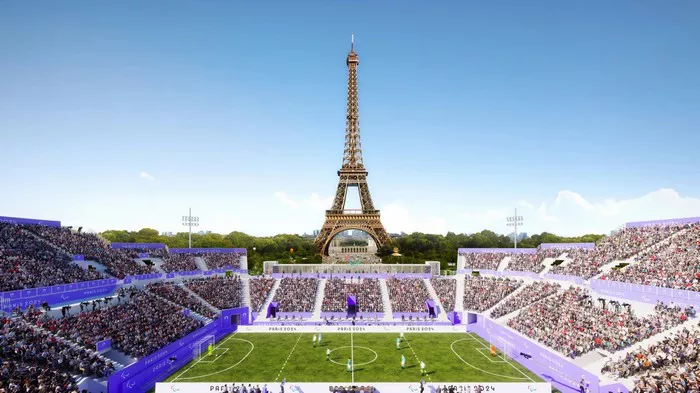The Paris 2024 Olympics ignited an unprecedented tourism surge across France and Europe, attracting over one hundred million international visitors and generating €71 billion in tourism revenue. With nearly five billion global viewers and twelve million ticket holders, the Games captivated the world and turned international interest into a massive travel boom. Americans led the charge in foreign attendance, and this global celebration of sport, culture, and sustainability not only showcased France’s heritage but also encouraged extended European travel, positioning the Paris Olympics as a significant driver of continental tourism growth.
In 2024, France not only hosted the most inclusive, sustainable, and innovative Olympics in history, but it also solidified its place as one of the most desirable travel destinations worldwide. The Paris 2024 Games seamlessly blended tradition with forward-thinking models of accessibility and environmental consciousness. They spotlighted France’s cultural, historical, and technological achievements, which attracted millions of travelers, especially from the U.S., which made up the largest share of international visitors to Paris (13.5%) and ranked second in foreign ticket sales.
Beyond the Olympics, France also marked monumental national moments in 2024. The 80th anniversary of the D-Day landings in Normandy attracted global attention, drawing tourists to northern France for commemorative ceremonies and battlefield tours. At the same time, the reopening of the Notre-Dame Cathedral after the devastating 2019 fire captivated worldwide audiences. The restoration of this iconic gothic masterpiece became a symbol of France’s resilience and commitment to cultural preservation.
By the end of 2024, France had welcomed over one hundred million international visitors, setting a new benchmark for global tourism success. The tourism industry generated €71 billion in revenue, making 2024 not just a cultural victory but an economic one.
The Paris 2024 Olympics were also notable for their environmental and social sustainability. Nearly 95% of the venues used were existing structures or temporary builds, minimizing carbon impact. Additionally, all events were powered by 100% renewable energy, resulting in a 54% reduction in carbon emissions compared to the London 2012 and Rio 2016 Games. One shining example of this sustainable legacy is the Centre Aquatique Olympique, built from recycled materials and equipped with a solar panel-covered roof, now serving local communities with year-round access to world-class swimming facilities.
The Olympics also accelerated France’s long-term infrastructure goals, particularly the Grand Paris Express. This transformative project, set to expand the metro system with over 200 kilometers of automated lines and 68 new stations by 2030, promises to make major Olympic venues and cultural districts more accessible. It will reshape how both residents and tourists experience the Île-de-France region, connecting the greater Paris area with emerging tourist hotspots.
The 2024 Olympics saw a resurgence in American interest in France, with U.S. travelers leading all foreign nationalities in ticket purchases and presence in Paris. Projections indicate a 10% rise in air travel to France during the first quarter of 2025, with a 15% increase in American arrivals compared to the same period in 2024. This growth is fueled by France’s Olympic momentum, as well as improved air connectivity and heightened interest in French culture, cuisine, and history.
Travelers now have the unique opportunity to retrace the Olympic torch’s path, explore legacy venues, and visit the Olympic Cauldron, set to return in June 2025 to the Tuileries Gardens—a lasting reminder of the Games’ unity and excitement.
While Paris took center stage during the Games, France’s regions also reaped the benefits of increased global attention. From Bordeaux’s vineyards to Marseille’s beaches and Lyon’s culinary scene, tourists were encouraged to explore beyond the capital. This shift highlights a growing trend among travelers who seek authenticity and local immersion. The 80th anniversary of D-Day in Normandy, for example, brought renewed attention to this historical region.
The reopening of Notre-Dame Cathedral in December 2024 marked a major milestone for France. The restoration of this iconic landmark, which had been closed since the 2019 fire, attracted a surge of visitors and spiritual travelers. Notre-Dame’s revival symbolized France’s enduring commitment to preserving its cultural heritage, and it became a major attraction in the tourism surge of 2024.
If 2024 marked France’s resurgence at the top of the global tourism ladder, 2025 is poised to build on that success. Early indicators show increased bookings for air travel, stronger international media coverage, and ongoing infrastructure projects that will further enhance tourism accessibility.
The French tourism board is already leveraging the momentum of Paris 2024 with targeted marketing campaigns in North America, Asia, and Latin America, promoting France as a destination that blends sustainability, inclusivity, and heritage.
The success of the Paris 2024 Olympics and the record-breaking tourism figures represent a global model for countries looking to grow tourism while safeguarding cultural and environmental integrity. France has proven that large-scale events need not come at the expense of local communities or the planet. By celebrating its heritage, innovation, and inclusivity, France has created a lasting tourism legacy with a global impact.
As 2025 approaches, it’s clear that the success of the Paris 2024 Olympics will continue to inspire tourists to visit France—and the rest of Europe—for years to come.

